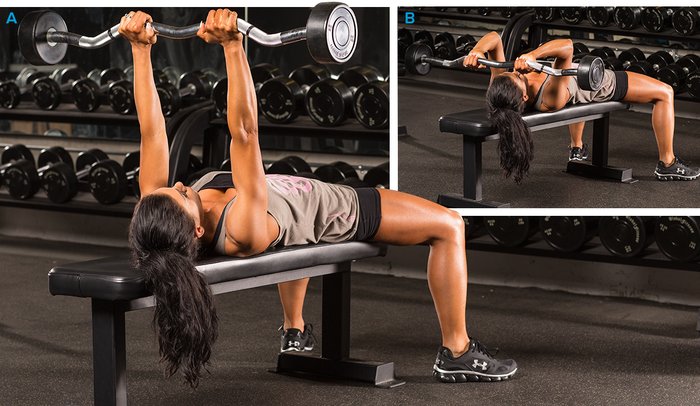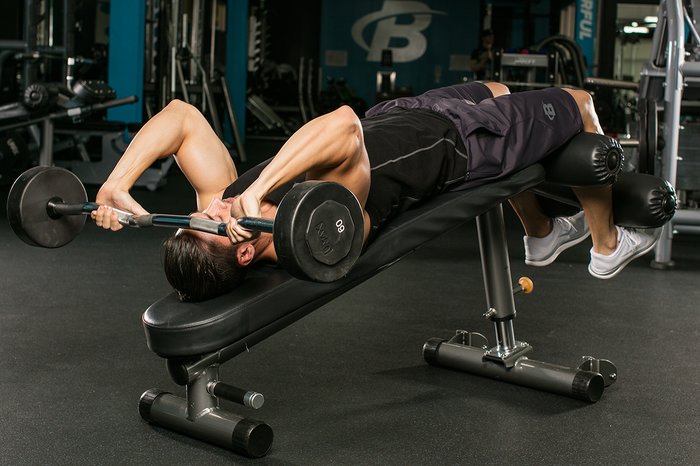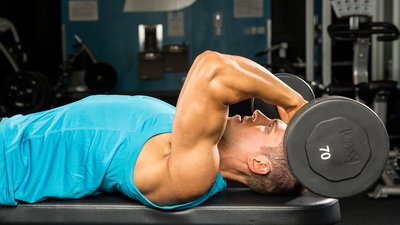Just about every lifter learns how to do skullcrushers in the earliest days of their training. Though it goes by a number of different names—lying French press, lying triceps extension, nose-breakers—most people perform it exactly the same way: on the flat bench, holding a weight with two hands above their forehead.
To be clear, the classic version of this single-joint movement is great; it delivers powerful results, because your arms are locked in position vertical to your body, which engages both the long and lateral triceps heads.
But if you think you're limited to just one way of doing skullcrushers, I'm about to crush your expectations!
How Skullcrushers Work
For a muscle to undergo a strong contraction, it must be completely stretched first. The long head is best engaged when your arms are overhead and it's in a stretched position, because the long head attaches to the rear portion of your shoulder blade and helps to extend. The other two triceps heads attach on the humerus (upper arm bone) and help to extend the forearm.

EZ-Bar Skullcrusher
Likewise, lateral-head movements get better stimulation when your hands are by your sides, as when doing push-downs, dips, and kick-backs. In this case, the long head isn't being stretched nearly as much, so its contribution is greatly diminished.
The skullcrusher is commonly done on a flat bench, which is what allows your arms to remain perpendicular to your body, a midpoint of sorts between the two arm positions cited above. But it doesn't always have to be done on that bench—and that's a great way to introduce variety into your arm training.
Alternate Version 1: On a Decline Bench
One option to replace the flat bench is to use a decline one instead—and here you have multiple options to determine the steepness of the bench. Keeping your upper arms perpendicular to the floor opens up the degree of bend in your elbows; that is, your arms are now in a position more by your sides than before. This will move the focus more squarely onto the lateral triceps head.

EZ-Bar Skullcrusher on Decline Bench
Alternate Version 2: On an Incline Bench
When you use an incline bench, your arms move closer to an overhead position, closing up the degree of bend in your elbows, thus shifting some of the emphasis back toward the long head and reducing lateral-head engagement. If you use differing degrees of incline, you can create even more ways to dial up or down long-head and lateral-head engagement.

